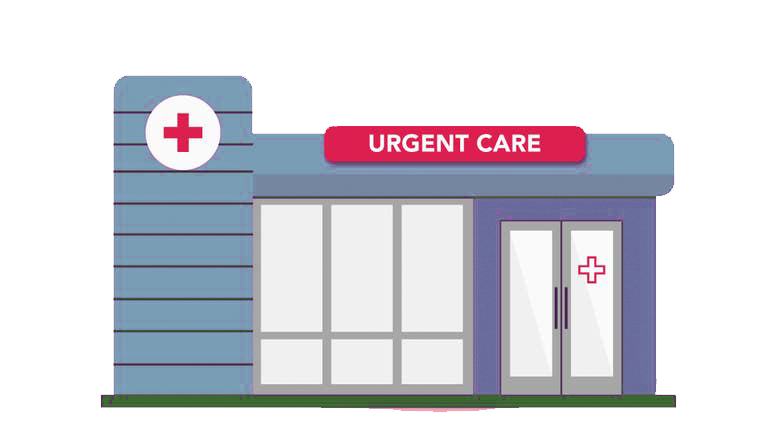Understanding When to Check Out Urgent Care for Non-Emergency Health Issues
Understanding When to Check Out Urgent Care for Non-Emergency Health Issues
Blog Article
Recognizing the Importance of Urgent Care Services for Non-Life-Threatening Medical Issues
The significance of immediate care solutions for non-life-threatening medical problems can not be overemphasized, particularly in today's healthcare landscape. By comprehending the advantages of immediate care, such as reduced delay times and expense effectiveness, one can better value their duty in individual health management.
What Is Urgent Treatment?
Urgent care describes a classification of clinical solutions designed to deal with non-life-threatening problems that require prompt focus yet do not call for a browse through to the emergency clinic. These facilities supply a bridge between health care and emergency services, supplying easily accessible medical care options for individuals experiencing intense medical problems, such as minor cracks, strains, infections, or severe health problems that arise all of a sudden.

The extent of solutions supplied by immediate care facilities can vary yet typically includes therapy for typical disorders like colds, influenza, and allergic reactions, as well as minor injuries (urgent care). In addition, several urgent care facilities supply preventative services, such as inoculations and physical examinations, to address wider health and wellness requirements. By providing a hassle-free option for immediate medical concerns, these facilities play a vital function in the medical care continuum, making certain that clients obtain proper care when they require it most
Benefits of Urgent Treatment Services
Lots of people find that using immediate treatment solutions provides significant advantages over standard emergency situation room gos to or waiting for a main treatment consultation. Immediate treatment facilities generally have shorter wait durations, enabling people to obtain prompt clinical focus when they require it most.
An additional advantage is the extended hours of procedure. Several immediate treatment centers are open evenings and weekend breaks, suiting people who may not be able to see their primary care doctor during regular office hours. This flexibility makes it simpler for individuals to gain access to treatment at their comfort.
Furthermore, urgent care services typically use an affordable alternative to emergency rooms. When seeking treatment for minor conditions at immediate treatment facilities instead than hospital emergency situation divisions., patients regularly face lower co-pays and overall expenses - urgent care.
Finally, urgent care facilities are furnished to deal with a variety of non-life-threatening concerns, supplying a broad series of services under one roof. This thorough technique not only simplifies the treatment procedure however also boosts client complete satisfaction by supplying reliable and prompt treatment.
Common Problems Treated
What kinds of non-life-threatening conditions can individuals expect to get therapy for at urgent care facilities? Immediate treatment facilities are outfitted to deal with a vast range of usual medical problems that call for timely interest but do not posture a prompt danger to life. These facilities typically deal with conditions such as minor cracks, sprains, and stress, providing essential look after injuries that occur during day-to-day activities or sporting activities.
Furthermore, people frequently seek therapy for breathing infections, consisting of colds, flu, and bronchitis, where prompt intervention can ease symptoms and stop problems. Skin problems such as breakouts, insect bites, and minor burns are likewise generally addressed, as prompt treatment can mitigate discomfort and minimize the threat of infection.

Contrasting Urgent Care and Emergency Spaces

One considerable difference waits times; urgent care facilities usually have shorter wait times compared to emergency clinic, which can be clogged with even more important situations. This effectiveness allows patients to receive prompt therapy for their conditions.
From an economic point of view, immediate care brows through often tend to be cheaper than emergency clinic sees. Insurance coverage copays and out-of-pocket expenses are usually lower at immediate care facilities, making them a much more economical selection for non-emergency situations.
Just How to Choose an Urgent Treatment Facility
Picking the best immediate care facility can dramatically improve the high quality of care received throughout a non-life-threatening clinical concern. When choosing an immediate care center, a number of crucial aspects need to be taken into consideration.
First, analyze the facility's accreditation and licensing. Some urgent treatment centers specialize in specific areas, while others offer detailed treatment for numerous medical issues.
Furthermore, take into consideration the location and hours of operation. A conveniently located facility with prolonged hours can be critical for prompt care. It's also recommended to inspect the facility's wait times and individual testimonials, which can give understandings into the see here overall client experience.
Final Thought
To conclude, urgent care services play an important function in attending to non-life-threatening clinical problems effectively. By providing immediate attention for various problems, these centers boost individual accessibility to timely care while reducing the strain on emergency situation areas. The advantages of immediate care, consisting of expanded hours and lower expenses, make them a favorable alternative for individuals looking for punctual therapy. Eventually, comprehending the importance of urgent treatment facilities adds to improved healthcare monitoring and individual contentment.
 By using a convenient choice for urgent clinical issues, these centers play a vital role in the medical care continuum, guaranteeing that people obtain suitable treatment when they need it most.
By using a convenient choice for urgent clinical issues, these centers play a vital role in the medical care continuum, guaranteeing that people obtain suitable treatment when they need it most.Lots of people discover that making use of urgent treatment solutions offers substantial advantages over standard emergency space visits or waiting for a main treatment appointment. Numerous immediate treatment centers are open check that evenings and weekend breaks, accommodating individuals that might not be able to see their primary care physician throughout normal office hours. Urgent treatment facilities are designed to deal with non-life-threatening problems, such as small cracks, infections, and diseases, using a hassle-free alternative to emergency spaces for those in demand of prompt care. Some urgent care facilities specialize in certain locations, while others give comprehensive care for various clinical problems.
Report this page